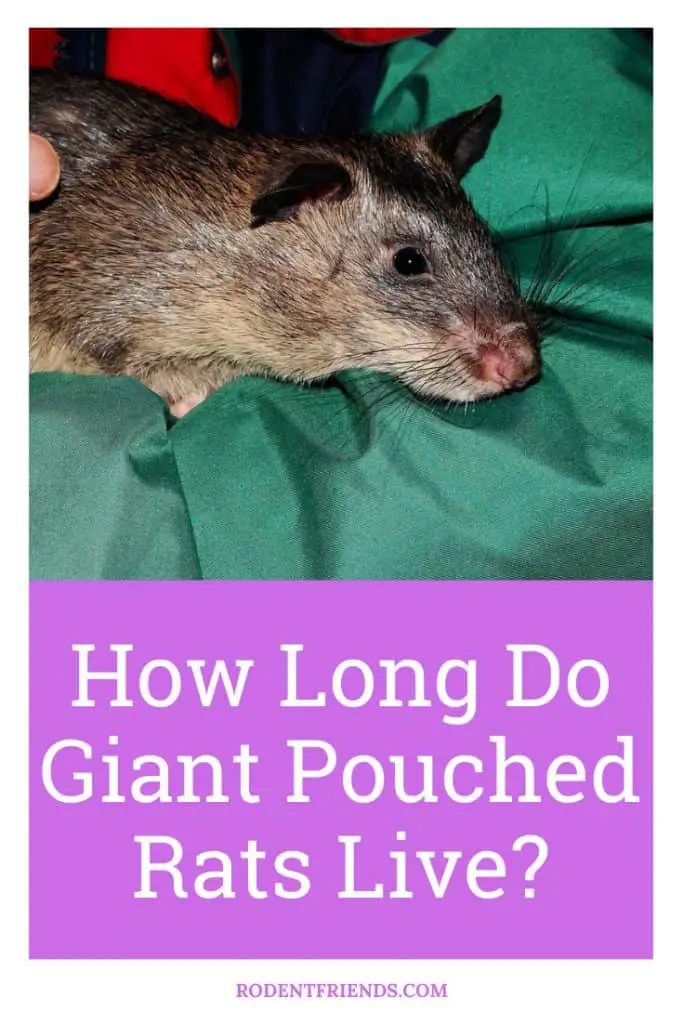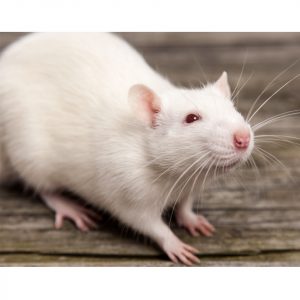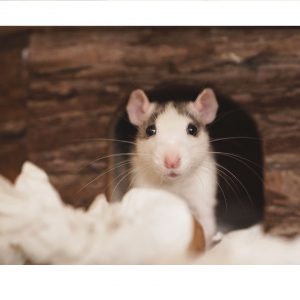If you want a larger pet rodent, you might want to consider a Giant Pouched Rat. They are the largest rat species in the world. Plus, they tend to have a relatively long life span, when compared with other pet species. But how big do these rats get and how long can you expect your furry friends to live?
Giant Pouched Rats, also known as Gambian Pouched Rats, will grow to be between 28 to 36 inches. The tail is between 14 to 18 inches long. Males and females are the same size. In captivity, Giant Pouched Rats will live for around seven years, though they have been known to live for eight years.
The unique size of the giant pouched rat has attracted a lot of attention from potential owners. In some ways, they are more comparable to a small cat, than a typical rat. But continue reading, to learn more about the characteristics of the Giant Pouched Rat.
How Big Do Giant Pouched Rats Get?
If you want to care for a Giant Pouched Rat, it’s important to consider how large it will be. This ensures that you have enough space for a cage. How large they will become will depend on the species you are talking about.
Sometimes, you might be discussing the short-tailed pouched rats. These tend to be a more compact variety. From the tip of their nose to their tail, they will measure 7 inches (18 cm).
However, most of the people interested in owning one of these animals will be investigating the African Giant Pouched Rat also sometimes known as the Gambian Pouched Rat. As the name suggests, these species are native to South Africa. We’ll be focusing on this variety for the rest of the article.
If you’re interested in other large rodents, do check my article on the Biggest Pet Rodents You Can Get, here.
Here are the key stats about this rat variety:
- Measure between 28 to 36 inches (~71 to 91 cm) from the tip of their nose to the end of their tails.
- The tail is the longest part of the rat, stretching for 14 to 18 inches (~35 to 45 cm).
- Males and females tend to be the same size
Because of their large size, you’ll need to make sure that you have an enclosure large enough to comfortably house them. It will need to be at least three feet long and two feet wide. Though the larger the cage is, the more comfortable the Giant Pouched Rat will be.
How Much Do African Pouched Rats Weigh?
Most adult Gambian Pouched Rats will weigh around three pounds (~1.3kg). In captivity, they have a greater chance of becoming overweight, as they don’t have the same active lifestyle they enjoyed while they were in the wild.
Their size isn’t the only extraordinary thing about this rat species. The Giant Pouched Rat is also known for its large weight. A healthy adult should weigh between two to three pounds. Usually, they will tip in at the higher end of the scale.
This is much different from pet rats, which weigh from 0.88 to 1.5 pounds!

In captivity, there is a chance that Gambian Pouched Rats will end up becoming obese. In the wild, they lead an active lifestyle, having to forage for their food. However, when kept as pets, they won’t have to do this.
For this reason, it’s important to keep them on a healthy diet and let them have lots of playtime and exercise daily!
How Long Can A Gambian Pouched Rat Live?
Trying to find their lifespan can be a little tough. When kept in captivity, we have good records. We know that most will live between six to seven years. Though some individuals have been known to live as long as eight years. The average, though, is closer to seven years.
In the wild, though, the data is harder to gather. Because they can be tough to catch, they can be difficult to study. Furthermore, they might be hunted as a food source, limiting the number of rats that can die from old age.
To prolong the life of your rat, there are a few health concerns that you should be aware of, these include:
- Respiratory infection
- Digestive problems
- Overgrown teeth
If you notice any of these problems, you should bring your rat to the vet for a check-up. If you can catch these problems early, there are more treatment options that you can explore.
Here are a few other key moments in the lifecycle of the Giant Pouched Rat:
- After five to seven months, they have reached sexual maturity
- Females have a gestation period of between 27 to 48 days.
- After 28 days, the rats are developed enough to leave their mother’s side and go off on their own.
These reproductive statistics prove why so many states are concerned about these rats getting introduced. They have the potential to breed rapidly, with an average of four pups per litter. As a result, once they enter an area, they can be very hard to eradicate.
Where Are Pouched Rats Legal?
In many parts of the United States, ownership of Giant Pouched Rats is banned. Furthermore, the importation of these rats is banned, unless they will be used for scientific purposes. To legally own one of these species, it’s required to go through a US breeder.
Because of how quickly these rats can reproduce, and the amount of damage they can do to the local ecosystem, many states have laws that ban people from owning them. If you are caught in violation of these laws, you could be facing a stiff penalty.
However, there might be an exception. You should be able to legally own one of these rats if you purchase through a US breeder. However, this is a niche species and there aren’t many that will have one of these rats available to purchase. Because of this, you can expect to pay a lot for one of these animals. Though it’s best to double-check by visiting your state’s website and reviewing the relevant laws.
It should be noted that you will be banned from importing one of these animals from Africa. The only exception to this law is when you intend to study them.
Final Thoughts
Their unique size makes the Gambian Pouched Rat a popular species. Their size and weight mean that they can sit on your lap. In short, you’ll have a rat that is roughly the size of a small cat!
They’re very hard to acquire and you’ll need to make sure that you have an enclosure large enough to house them. Not only that, but due to its nature, you’ll also need to provide a very balanced diet along with lots of exercise, so they can keep living healthy and happy.
References
https://www.britannica.com/animal/African-pouched-rat
https://www.krugerpark.co.za/africa_african_giant_rat.html
https://animalia.bio/gambian-pouched-rat
https://myfwc.com/wildlifehabitats/nonnatives/mammals/rodents/gambian-pouched-rat/





